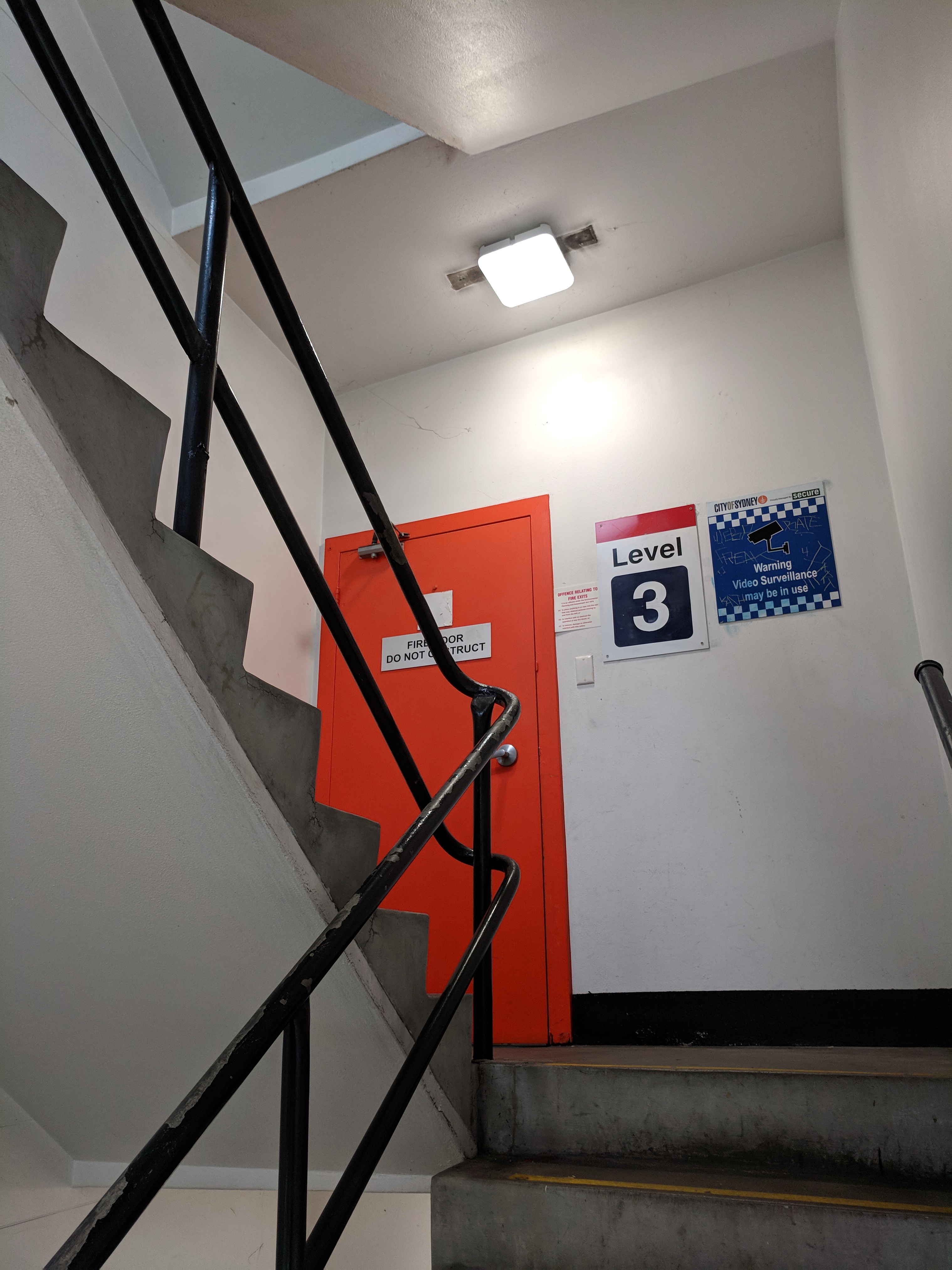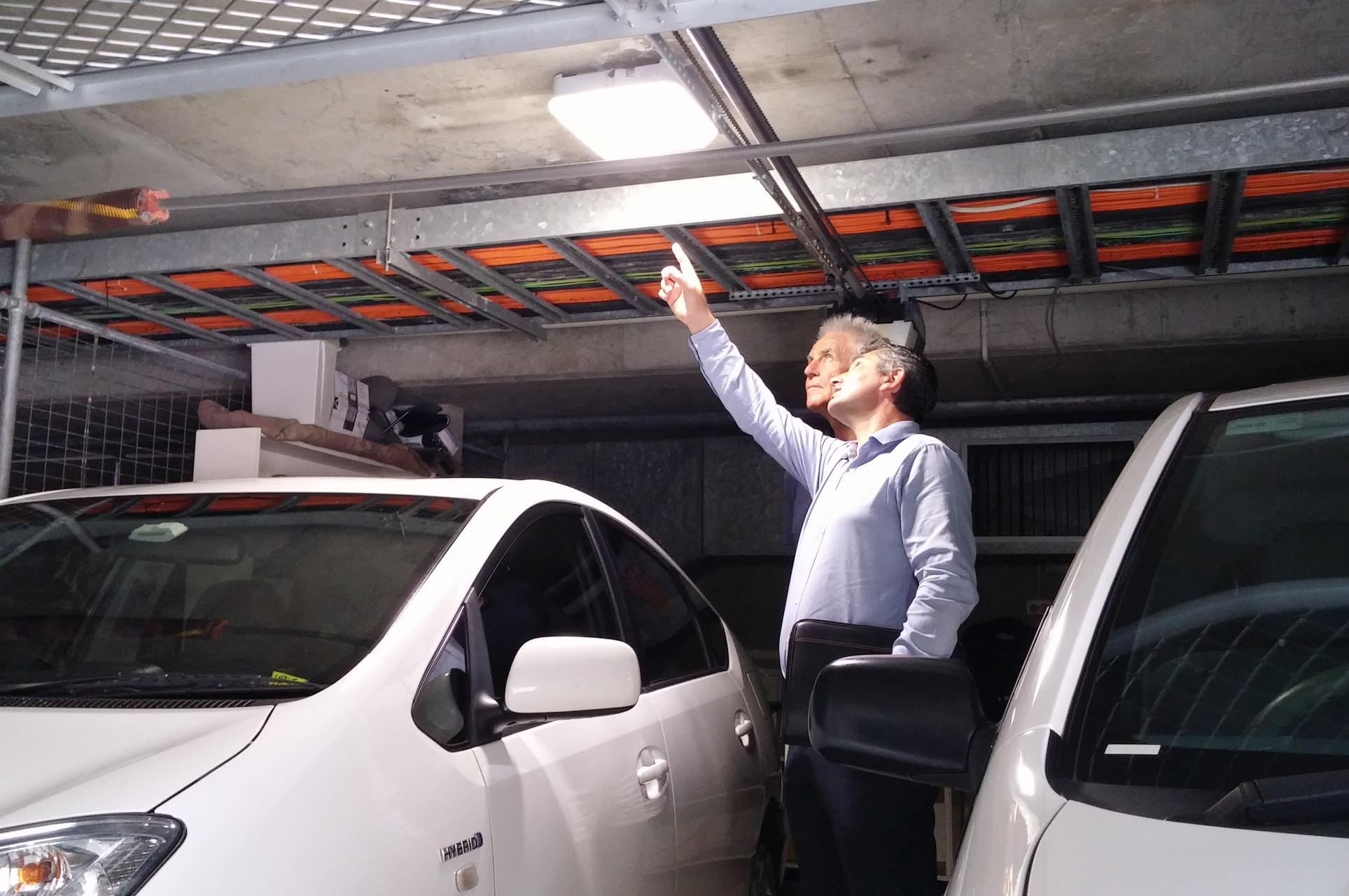How To Change Batteries In Emergency Lights
What is the purpose of emergency lighting?
Author: Dominik Pfaff | Published: 10 Dec, 2021
The purpose of emergency lighting is to provide a level of illumination in the egress path that allows the occupants of the building to safely get out in the consequence of a mains power failure.
The Building Lawmaking of Commonwealth of australia mandates the use of emergency lighting systems in all types of buildings except for standalone single residential dwellings & not-habitable structures.
What is the difference between maintained and not-maintained emergency lights?
A maintained emergency light (east.thousand. an LED batten with battery backup) will provide its normal level of illumination when mains power is available and volition operate on bombardment ability at a reduced illumination level when mains power fails. Typically used in carparks & firestairs.
A not-maintained fitting (due east.g. a spitfire emergency light) is not illuminated unless mains power fails. Typically used in commercial offices.
What is the typical expected life of a bombardment in an emergency light and what factors tin can negatively impact the lifetime?
A bombardment in an emergency light typically lasts for 3-four years. The following factors tin can lead to pre-mature battery failure:
- Loftier ambient temperatures
- Storing the emergency luminaires for an extended time after buy, before installing them.
- Leaving emergency batteries in a discharged stage for extended periods, due east.yard. during construction
- Temperatures below 0ºC for LiFePO4 batteries

How oft is testing of the emergency lights required?
AS 2293 prescribes a test interval of 6 months & 12 months for a range of tests. The main purpose of the tests is to ensure that emergency lights must operate for xc minutes on battery power when mains power is turned off. This is to ensure that the lights have sufficient remaining battery capacity in the event of mains power failure.
It is expert practice to clean diffusers of emergency lights at regular intervals to ensure that clay build-upward does not impact the light output. This is peculiarly of import in environments such equally a automobile park.
What are the dissimilar test systems used for emergency lighting?
Manual examination
This test requires the person conducting the test to turn off power at the switchboard, await for 90min and then walk around to check if all emergency lights are notwithstanding operational. This test should be conducted in such a way that occupants of the building are not adversely affected.
Automatic standalone cocky-examination
A fitting with a standalone automatic self-test (such every bit the Chamaeleon Three) will automatically test the battery at stock-still intervals and display the result of the test via an indicator on the plumbing equipment. A person conducting the test can quickly identify which fittings have passed or failed the test by checking the indicator, without having to turn power off or wait for 90 minutes.

Monitored organisation
In a monitored system all emergency lights are connected to a reckoner via cables or wireless communication. Emergency tests can exist scheduled via software and results are displayed on a computer. As per the standards, a person still needs to physically check each & every emergency fitting for cleanliness, status etc. Due to cabling & system requirements, this system is expensive & more difficult to commission compared to a standalone self-test.
Do I demand to purchase and install a new luminaire when it fails to operate for the required ninety minutes test duration?
In that location is a misconception that the unabridged fitting has to exist replaced when the plumbing equipment fails the emergency examination. In bulk of the cases, all that is required is a battery replacement. LED luminaires and the integrated battery charging electronics have a long lifetime therefore it would exist a waste of resources and money to dispose of the entire fitting just because the battery failed the emergency test.
Tin a layperson supersede batteries in emergency lights?
In luminaires where the battery is located within the fitting, an electrician is required to modify the battery since power must be isolated earlier the fitting is disassembled to access the battery.
The Chamaeleon III luminaire features an external accessible battery describe which allows replacement of the bombardment without isolating ability or engaging an electrician.
Tin can I dispose of old emergency calorie-free batteries in full general waste material or the recycling bin?
For environmental and safe reasons, batteries should not be tending of in general waste product or via the household recycling bin. They should be recycled at a recycling facility where they are dismantled safely and valuable resources are recovered. Contact your local council or electrical wholesaler for advice on battery recycling.
Source: https://www.enlighten.com.au/knowledge-centre/what-is-the-purpose-of-emergency-lighting
Posted by: reesewousing.blogspot.com



0 Response to "How To Change Batteries In Emergency Lights"
Post a Comment